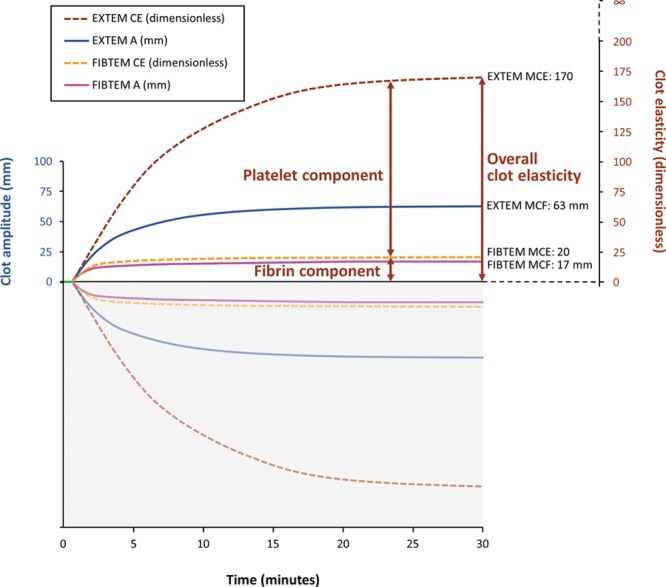Figure 2.

Derivation of the platelet component from viscoelastic assays performed in whole blood, in the presence and absence of platelet inhibition. The graph represents data obtained from a healthy volunteer with coagulation parameters in the normal range (roTEG®05 device; software version 2.95–2.99, December 2001; readings taken every 10 s are represented by curves of best fit). The platelet component is defined as the difference in clot elasticity between values obtained from assays with and without platelet inhibition. Conversion of clot amplitude to clot elasticity is therefore needed for calculation of the platelet component. As shown with ROTEM®, calculation of the platelet component requires data from the EXTEM and FIBTEM assays. With TEG®, the RapidTEG and Functional Fibrinogen assays could be used for this purpose; the procedure for calculating the platelet component would be the same. A = clot amplitude; CE = clot elasticity; EXTEM = ROTEM® extrinsically activated test; FIBTEM = ROTEM® test designed to assess fibrin-based clotting; MCE = maximum clot elasticity; MCF = maximum clot firmness.
